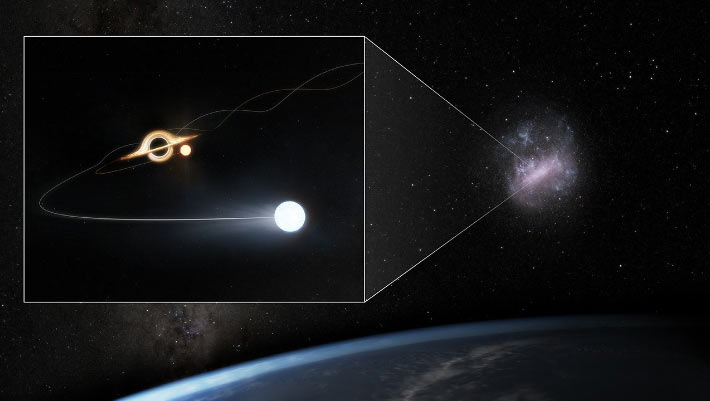The mass of the supermassive black hole in the center of the Large Magellanic Cloud, a small satellite galaxy of the Milky Way, is about 600,000 solar masses.
“The halo of our Milky Way Galaxy contains a small number of stars that are traveling faster than the local escape velocity on trajectories that will carry them into intergalactic space,” said Dr. Jesse Han from the Harvard & Smithsonian’s Center for Astrophysics and colleagues.
“One mechanism for producing such hypervelocity stars is the Hills mechanism: when a close binary star strays near a supermassive black hole, one star can be captured, while the other is ejected at velocities that can reach over 1,000 km per second.”
In their new study, the astronomers traced the paths with ultra-fine precision of 21 hypervelocity stars in the Milky Way’s outer halo.
They confidently classified 16 of these stars and found that 7 of them were consistent with originating from the center of the Milky Way.
However, the other 9 stars were consistent with originating from the center of the Large Magellanic Cloud, which is located around 160,000 light-years away from us.
“It is astounding to realize that we have another supermassive black hole just down the block, cosmically speaking,” Dr. Han said.
“Black holes are so stealthy that this one has been practically under our noses this whole time.”
The researchers found the Large Magellanic Cloud’s black hole by using data from ESA’s Gaia mission.
They also used an improved understanding of the dwarf galaxy’s orbit around the Milky Way recently obtained by other astronomers.
“We knew that these hypervelocity stars had existed for a while, but Gaia has given us the data we need to figure out where they actually come from,” said Dr. Kareem El-Badry, an astronomer at Caltech.
“By combining these data with our new theoretical models for how these stars travel, we made this remarkable discovery.”
“The only explanation we can come up with…
Read the full article here

